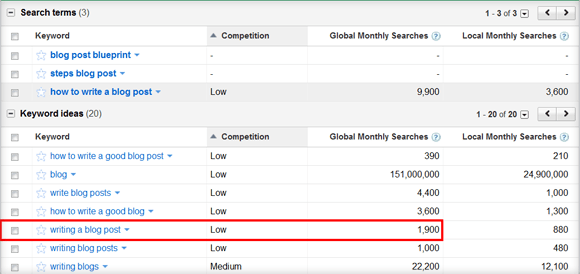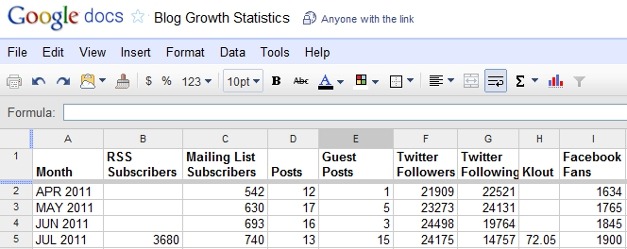25 Common Characteristics of Successful Entrepreneurs
Regardless of your definition of success, there are, oddly enough, a great number of common characteristics that are shared by successful businesspeople. You can place a check beside each characteristic that you feel that you possess. This way, you can see how you stack up. Even if you don't have all of these characteristics, don't fret. Most can be learned with practice and by developing a winning attitude, especially if you set goals and apply yourself, through strategic planning, to reach those goals in incremental and measurable stages.
The Home Business Musts
Like any activity you pursue, there are certain musts that are required to be successful in a chosen activity. To legally operate a vehicle on public roadways, one must have a driver's license; to excel in sports, one must train and practice; to retire comfortably, one must become an informed investor and actively invest for retirement. If your goal is success in business, then the formula is no different. There are certain musts that have to be fully developed, implemented and managed for your business to succeed. There are many business musts, but this article contains I believe to be some of the more important musts that are required to start, operate and grow a profitable home business.
1. Do what you enjoy.
What you get out of your business in the form of personal satisfaction, financial gain, stability and enjoyment will be the sum of what you put into your business. So if you don't enjoy what you're doing, in all likelihood it's safe to assume that will be reflected in the success of your business--or subsequent lack of success. In fact, if you don't enjoy what you're doing, chances are you won't succeed.
2. Take what you do seriously.
You cannot expect to be effective and successful in business unless you truly believe in your business and in the goods and services that you sell. Far too many home business owners fail to take their own businesses seriously enough, getting easily sidetracked and not staying motivated and keeping their noses to the grindstone. They also fall prey to naysayers who don't take them seriously because they don't work from an office building, office park, storefront, or factory. Little do these skeptics, who rain on the home business owner's parade, know is that the number of people working from home, and making very good annual incomes, has grown by leaps and bounds in recent years.
3. Plan everything.
Planning every aspect of your home business is not only a must, but also builds habits that every home business owner should develop, implement, and maintain. The act of business planning is so important because it requires you to analyze each business situation, research and compile data, and make conclusions based mainly on the facts as revealed through the research. Business planning also serves a second function, which is having your goals and how you will achieve them, on paper. You can use the plan that you create both as map to take you from point A to Z and as a yardstick to measure the success of each individual plan or segment within the plan.
4. Manage money wisely.
The lifeblood of any business enterprise is cash flow. You need it to buy inventory, pay for services, promote and market your business, repair and replace tools and equipment, and pay yourself so that you can continue to work. Therefore, all home business owners must become wise money managers to ensure that the cash keeps flowing and the bills get paid. There are two aspects to wise money management.
- The money you receive from clients in exchange for your goods and services you provide (income)
- The money you spend on inventory, supplies, wages and other items required to keep your business operating. (expenses)
A home business entrepreneur must always remember that marketing, advertising, or promotional activities are completely worthless, regardless of how clever, expensive, or perfectly targeted they are, unless one simple thing is accomplished--ask for the sale. This is not to say that being a great salesperson, advertising copywriting whiz or a public relations specialist isn't a tremendous asset to your business. However, all of these skills will be for naught if you do not actively ask people to buy what you are selling.
6. Remember it's all about the customer.
Your home business is not about the products or services that you sell. Your home business is not about the prices that you charge for your goods and services. Your home business is not about your competition and how to beat them. Your business is all about your customers, or clients, period. After all, your customers are the people that will ultimately decide if your business goes boom or bust. Everything you do in business must be customer focused, including your policies, warranties, payment options, operating hours, presentations, advertising and promotional campaigns and website. In addition, you must know who your customers are inside out and upside down.
7. Become a shameless self-promoter (without becoming obnoxious).
One of the greatest myths about personal or business success is that eventually your business, personal abilities, products or services will get discovered and be embraced by the masses that will beat a path to your door to buy what you are selling. But how can this happen if no one knows who you are, what you sell and why they should be buying?
Self-promotion is one of the most beneficial, yet most underutilized, marketing tools that the majority of home business owners have at their immediate disposal.
8. Project a positive business image.
You have but a passing moment to make a positive and memorable impression on people with whom you intend to do business. Home business owners must go out of their way and make a conscious effort to always project the most professional business image possible. The majority of home business owners do not have the advantage of elaborate offices or elegant storefronts and showrooms to wow prospects and impress customers. Instead, they must rely on imagination, creativity and attention to the smallest detail when creating and maintaining a professional image for their home business.
9. Get to know your customers.
One of the biggest features and often the most significant competitive edge the home based entrepreneur has over the larger competitors is the he can offer personalized attention. Call it high-tech backlash if you will, but customers are sick and tired of hearing that their information is somewhere in the computer and must be retrieved, or told to push a dozen digits to finally get to the right department only to end up with voice mail--from which they never receive a return phone call.
The home business owner can actually answer phone calls, get to know customers, provide personal attention and win over repeat business by doing so. It's a researched fact that most business (80 percent) will come from repeat customers rather than new customers. Therefore, along with trying to draw newcomers, the more you can do to woo your regular customers, the better off you will be in the long run and personalized attention is very much appreciated and remembered in the modern high tech world.
10. Level the playing field with technology.
You should avoid getting overly caught up in the high-tech world, but you should also know how to take advantage of using it. One of the most amazing aspects of the internet is that a one or two person business operating from a basement can have a superior website to a $50 million company, and nobody knows the difference. Make sure you're keeping up with the high-tech world as it suits your needs.. The best technology is that which helps you, not that which impresses your neighbors.
11. Build a top-notch business team.
No one person can build a successful business alone. It's a task that requires a team that is as committed as you to the business and its success. Your business team may include family members, friends, suppliers, business alliances, employees, sub-contractors, industry and business associations, local government and the community. Of course the most important team members will be your customers or clients. Any or all may have a say in how your business will function and a stake in your business future.
12. Become known as an expert.
When you have a problem that needs to be solved, do you seek just anyone's advice or do you seek an expert in the field to help solve your particular problem? Obviously, you want the most accurate information and assistance that you can get. You naturally seek an expert to help solve your problem. You call a plumber when the hot water tank leaks, a real estate agent when it's time to sell your home or a dentist when you have a toothache. Therefore, it only stands to reason that the more you become known for your expertise in your business, the more people will seek you out to tap into your expertise, creating more selling and referral opportunities. In effect, becoming known as an expert is another style of prospecting for new business, just in reverse. Instead of finding new and qualified people to sell to, these people seek you out for your expertise.
13. Create a competitive advantage.
A home business must have a clearly defined unique selling proposition. This is nothing more than a fancy way of asking the vital question, "Why will people choose to do business with you or purchase your product or service instead of doing business with a competitor and buying his product or service?" In other words, what one aspect or combination of aspects is going to separate your business from your competition? Will it be better service, a longer warranty, better selection, longer business hours, more flexible payment options, lowest price, personalized service, better customer service, better return and exchange policies or a combination of several of these?
14. Invest in yourself.
Top entrepreneurs buy and read business and marketing books, magazines, reports, journals, newsletters, websites and industry publications, knowing that these resources will improve their understanding of business and marketing functions and skills. They join business associations and clubs, and they network with other skilled business people to learn their secrets of success and help define their own goals and objectives. Top entrepreneurs attend business and marketing seminars, workshops and training courses, even if they have already mastered the subject matter of the event. They do this because they know that education is an ongoing process. There are usually ways to do things better, in less time, with less effort. In short, top entrepreneurs never stop investing in the most powerful, effective and best business and marketing tool at their immediate disposal--themselves.
15. Be accessible.
We're living in a time when we all expect our fast food lunch at the drive-thru window to be ready in mere minutes, our dry cleaning to be ready for pick-up on the same day, our money to be available at the cash machine and our pizza delivered in 30 minutes or it's free. You see the pattern developing--you must make it as easy as you can for people to do business with you, regardless of the home business you operate.
You must remain cognizant of the fact that few people will work hard, go out of their way, or be inconvenienced just for the privilege of giving you their hard-earned money. The shoe is always on the other foot. Making it easy for people to do business with you means that you must be accessible and knowledgeable about your products and services. You must be able to provide customers with what they want, when they want it.
16. Build a rock-solid reputation.
A good reputation is unquestionably one of the home business owner's most tangible and marketable assets. You can't simply buy a good reputation; it's something that you earn by honoring your promises. If you promise to have the merchandise in the customer's hands by Wednesday, you have no excuse not to have it there. If you offer to repair something, you need to make good on your offer. Consistency in what you offer is the other key factor. If you cannot come through with the same level of service (and products) for clients on a regular basis, they have no reason to trust you . . . and without trust, you won't have a good reputation.
17. Sell benefits.
Pushing product features is for inexperienced or wannabe entrepreneurs. Selling the benefits associated with owning and using the products and services you carry is what sales professionals worldwide focus on to create buying excitement and to sell, sell more, and sell more frequently to their customers. Your advertising, sales presentations, printed marketing materials, product packaging, website, newsletters, trade show exhibit and signage are vital. Every time and every medium used to communicate with your target audience must always be selling the benefits associated with owning your product or using your service.
18. Get involved.
Always go out of your way to get involved in the community that supports your business. You can do this in many ways, such as pitching in to help local charities or the food bank, becoming involved in organizing community events, and getting involved in local politics. You can join associations and clubs that concentrate on programs and policies designed to improve the local community. It's a fact that people like to do business with people they know, like and respect, and with people who do things to help them as members of the community.
19. Grab attention.
Small-business owners cannot waste time, money and energy on promotional activities aimed at building awareness solely through long-term, repeated exposure. If you do, chances are you will go broke long before this goal is accomplished. Instead, every promotional activity you engage in, must put money back in your pocket so that you can continue to grab more attention and grow your business.
20. Master the art of negotiations.
The ability to negotiate effectively is unquestionably a skill that every home business owner must make every effort to master. It's perhaps second in importance only to asking for the sale in terms of home business musts. In business, negotiation skills are used daily. Always remember that mastering the art of negotiation means that your skills are so finely tuned that you can always orchestrate a win-win situation. These win-win arrangements mean that everyone involved feels they have won, which is really the basis for building long-term and profitable business relationships.
21. Design Your workspace for success.
Carefully plan and design your home office workspace to ensure maximum personal performance and productivity and, if necessary, to project professionalism for visiting clients. If at all possible, resist the temptation to turn a corner of the living room or your bedroom into your office. Ideally, you'll want a separate room with a door that closes to keep business activities in and family members out, at least during prime business and revenue generating hours of the day. A den, spare bedroom, basement or converted garage are all ideal candidates for your new home office. If this is not possible, you'll have to find a means of converting a room with a partition or simply find hours to do the bulk of your work when nobody else is home.
22. Get and stay organized.
The key to staying organized is not about which type of file you have or whether you keep a stack or two of papers on your desk, but it's about managing your business. It's about having systems in place to do things. Therefore, you wan to establish a routine by which you can accomplish as much as possible in a given workday, whether that's three hours for a part-time business or seven or nine hours as a full-timer. In fact, you should develop systems and routines for just about every single business activity. Small things such as creating a to-do list at the end of each business day, or for the week, will help keep you on top of important tasks to tackle. Creating a single calendar to work from, not multiple sets for individual tasks or jobs, will also ensure that jobs are completed on schedule and appointments kept. Incorporating family and personal activities into your work calendar is also critical so that you work and plan from a single calendar.
23. Take time off.
The temptation to work around the clock is very real for some home business owners. After all, you don't have a manager telling you it's time to go home because they can't afford the overtime pay. Every person working from home must take time to establish a regular work schedule that includes time to stretch your legs and take lunch breaks, plus some days off and scheduled vacations. Create the schedule as soon as you have made the commitment to start a home business. Of course, your schedule will have to be flexible. You should, therefore, not fill every possible hour in the day. Give yourself a backup hour or two. All work and no play makes you burn out very fast and grumpy customer service is not what people want.
24. Limit the number of hats you wear.
It's difficult for most business owners not to take a hands-on approach. They try to do as much as possible and tackle as many tasks as possible in their business. The ability to multitask, in fact, is a common trait shared by successful entrepreneurs. However, once in a while you have to stand back and look beyond today to determine what's in the best interest of your business and yourself over the long run. Most highly successful entrepreneurs will tell you that from the time they started out, they knew what they were good at and what tasks to delegate to others.
25. Follow-up constantly.
Constant contact, follow-up, and follow-through with customers, prospects, and business alliances should be the mantra of every home business owner, new or established. Constant and consistent follow-up enables you to turn prospects into customers, increase the value of each sale and buying frequency from existing customers, and build stronger business relationships with suppliers and your core business team. Follow-up is especially important with your existing customer base, as the real work begins after the sale. It's easy to sell one product or service, but it takes work to retain customers and keep them coming back.
James Stephenson is an experienced home based consultant with more than 15 years of business and marketing experience. He is the author of several popular books, including Entrepreneur magazine's Ultimate Startup Directory and Ultimate Small Business Marketing Guide, both available from Entrepreneur Press.
Read more: http://www.entrepreneur.com/article/200730#ixzz2ddw8mOld









